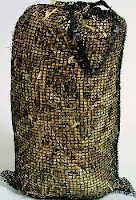The technique of using barley for algae control was developed in the early 1990s in England, where it is widely used in many bodies of water, including large reservoirs and canals. In general, it is thought that fungi decompose the barley in water, which causes a chemical to be released that prevents the growth of the algae.
The specific chemical(s) has not been identified (oxidized polyphenolics and hydrogen peroxide are two decomposition products that have been suggested), and it is not clear whether the chemical is exuded from the barley itself or if it is a metabolicbproduct produced by the fungi.
The activity of barley straw is usually described as being algistatic (prevents new growth of algae) rather than algicidal (kills already existing algae).
If you are using barley in the form of straw or straw bales, then it is best to partially submerge the barley in the water and place it near recirculating water such as in a pond filter or skimmer. Be aware of approximately how many gallons of water are in your pond so you can add a sufficient amount of barley straw to control the algae. The label on the product will guide you as to the proper amount to add.
Barley pellets and extract can be easily added to your pond or water garden as needed. If you have a very small pond such as a rigid, molded type, then the barley liquid extract would be the first choice because it would obviously not have to be hidden out of sight.
 |
| Barley Straw Pellet |
Barley takes time to bio-degrade naturally in a pond so patience is needed if your algae or green water problem doesn't clear quickly. On average, expect 3-4 weeks for improvements to be seen in your water garden. Barley extract or pellets work more quickly than the straw.





0 comments:
Post a Comment